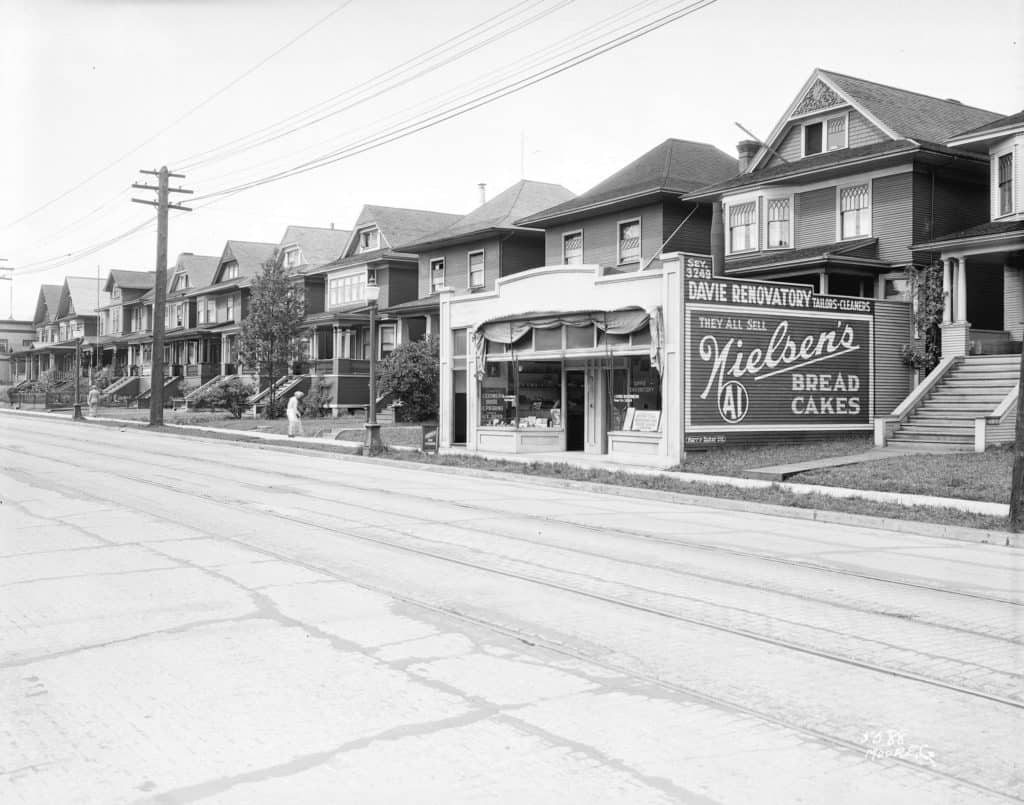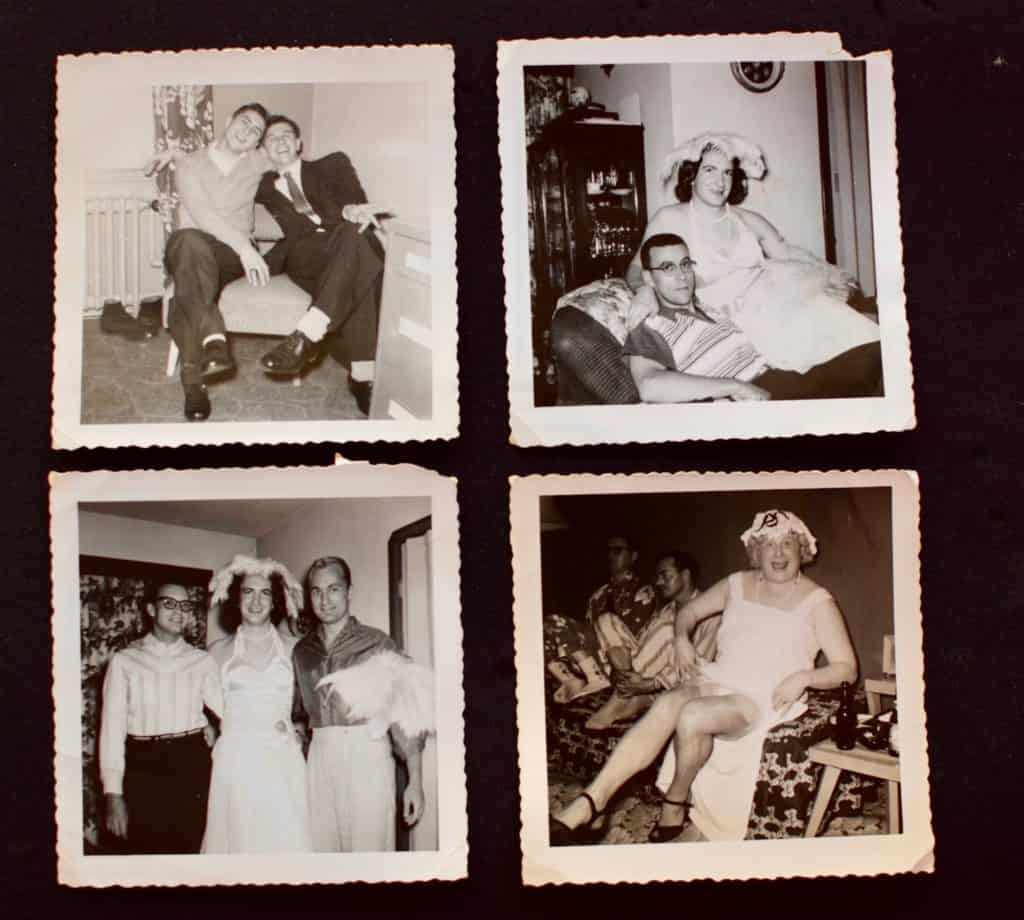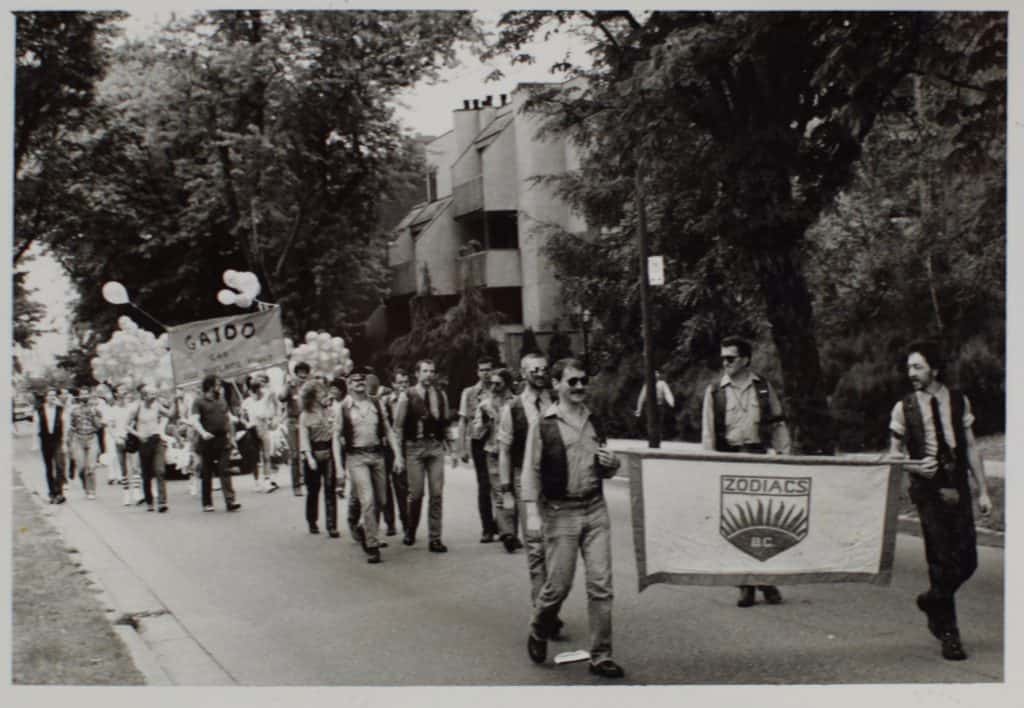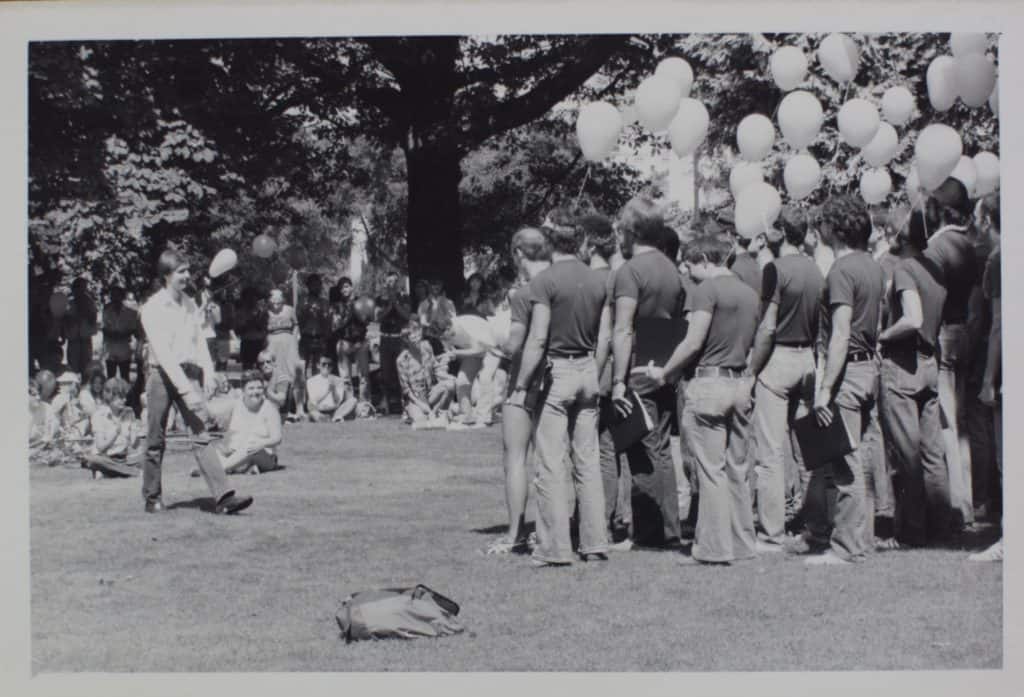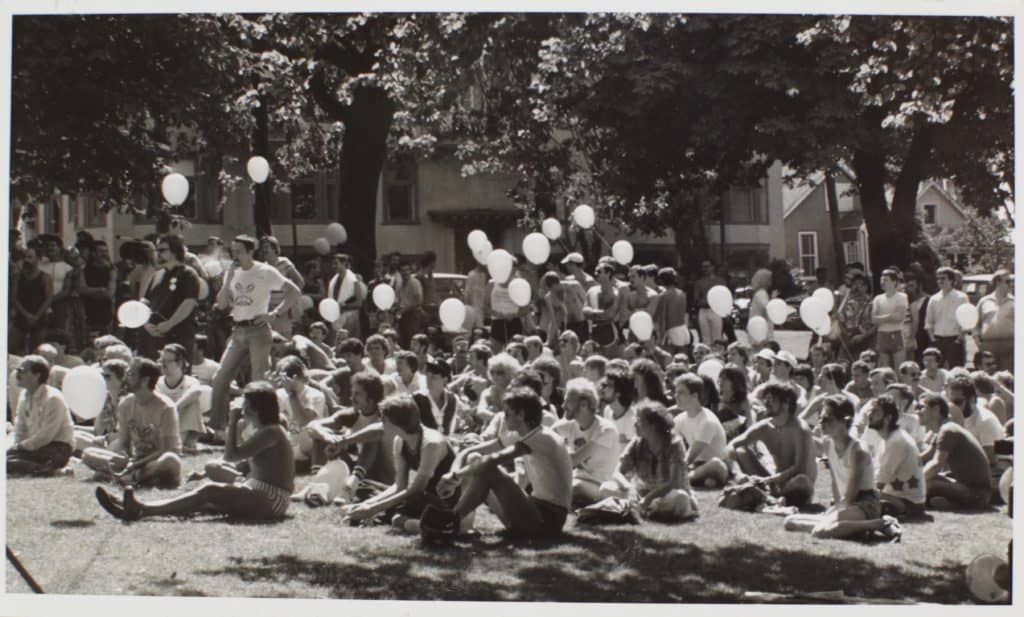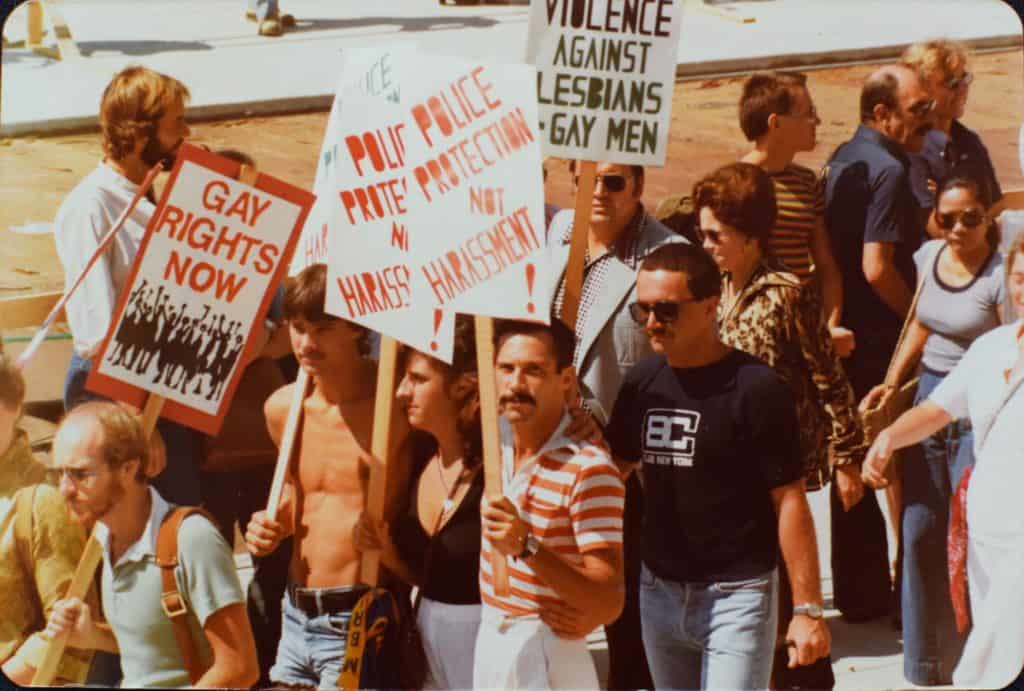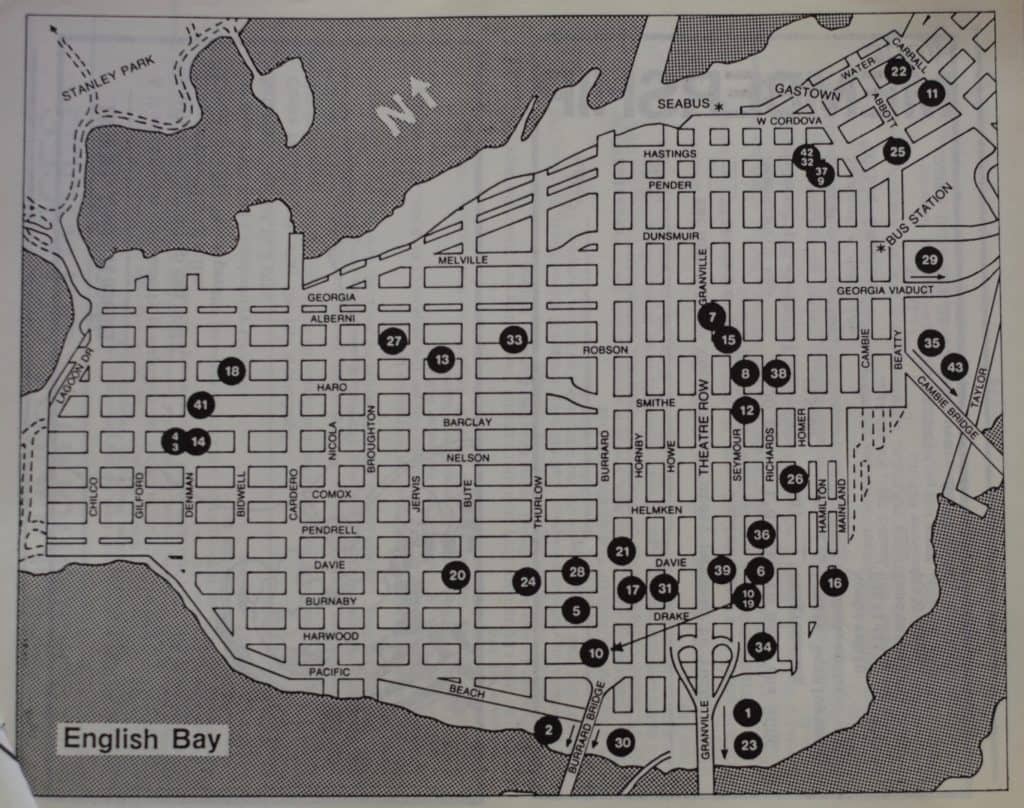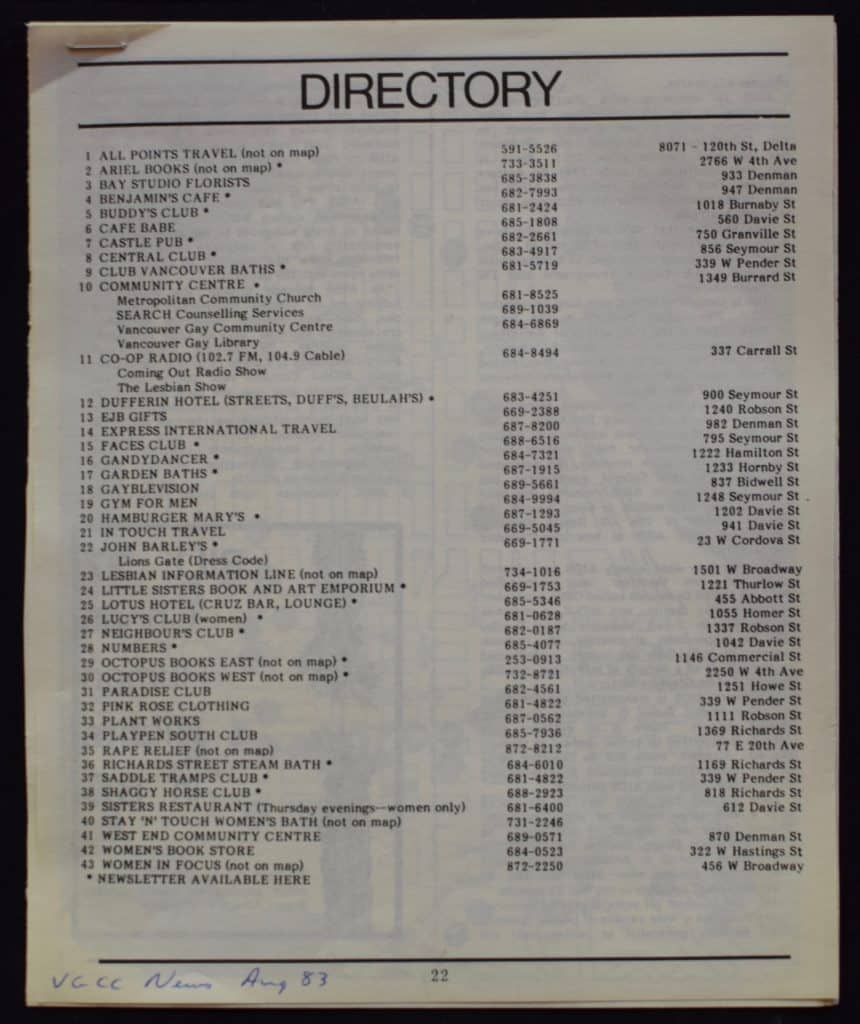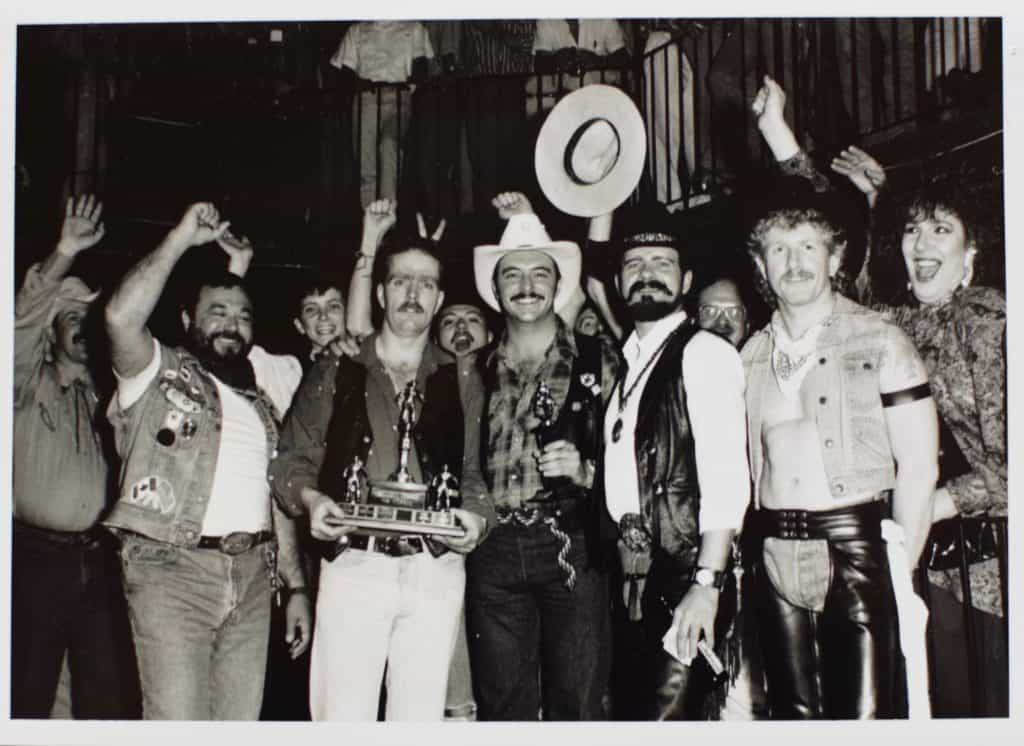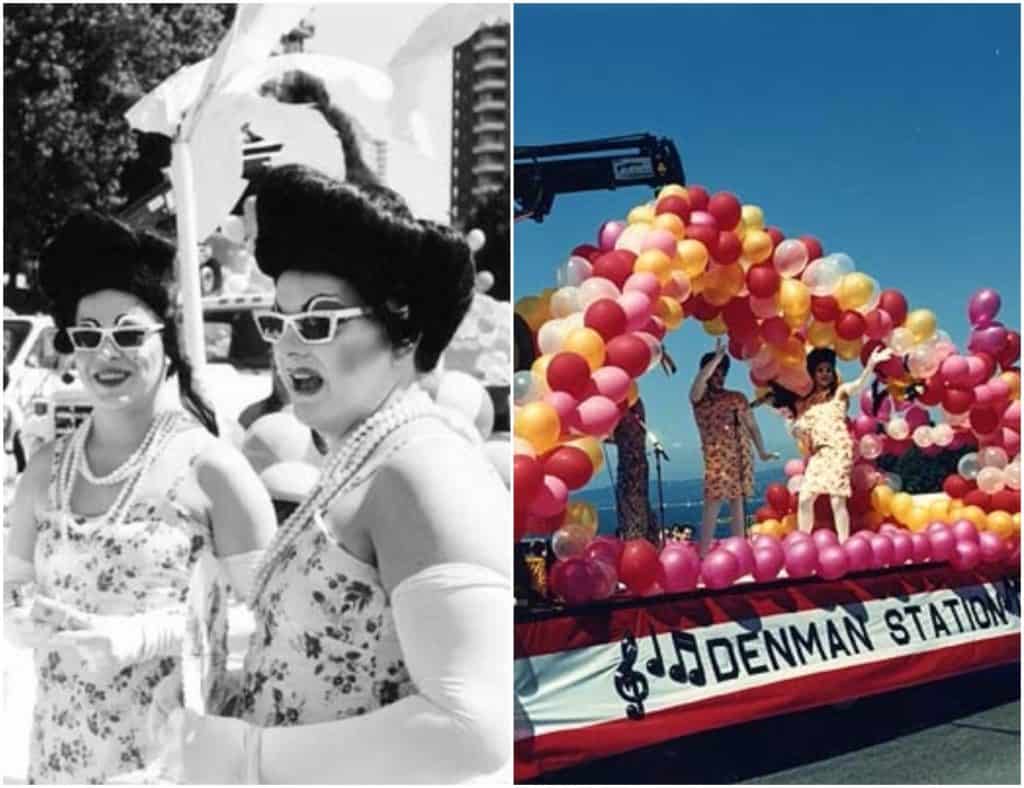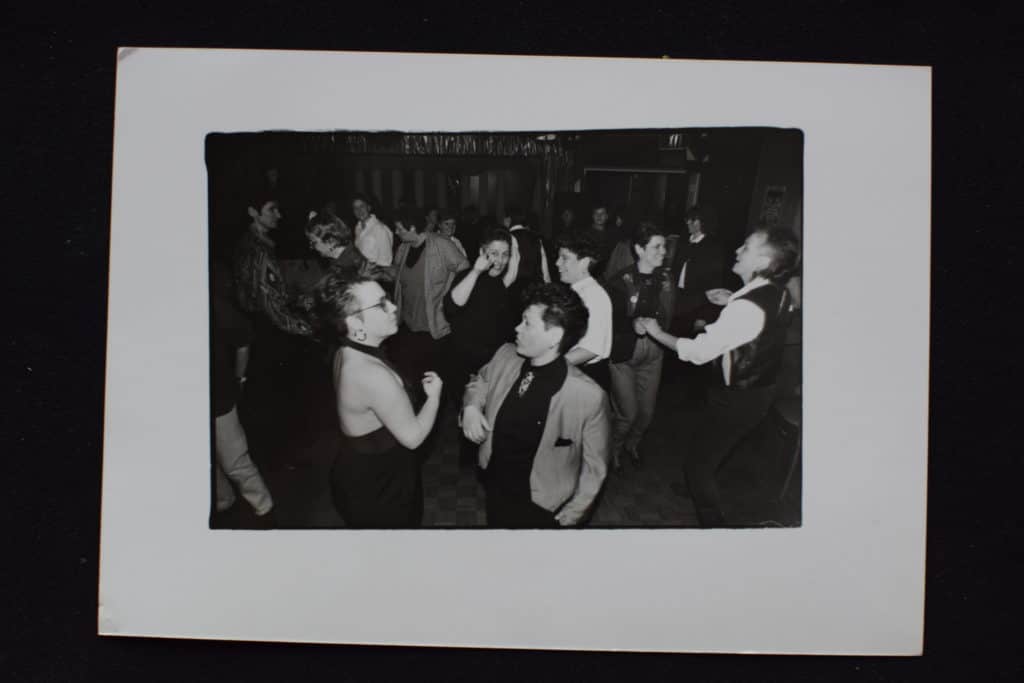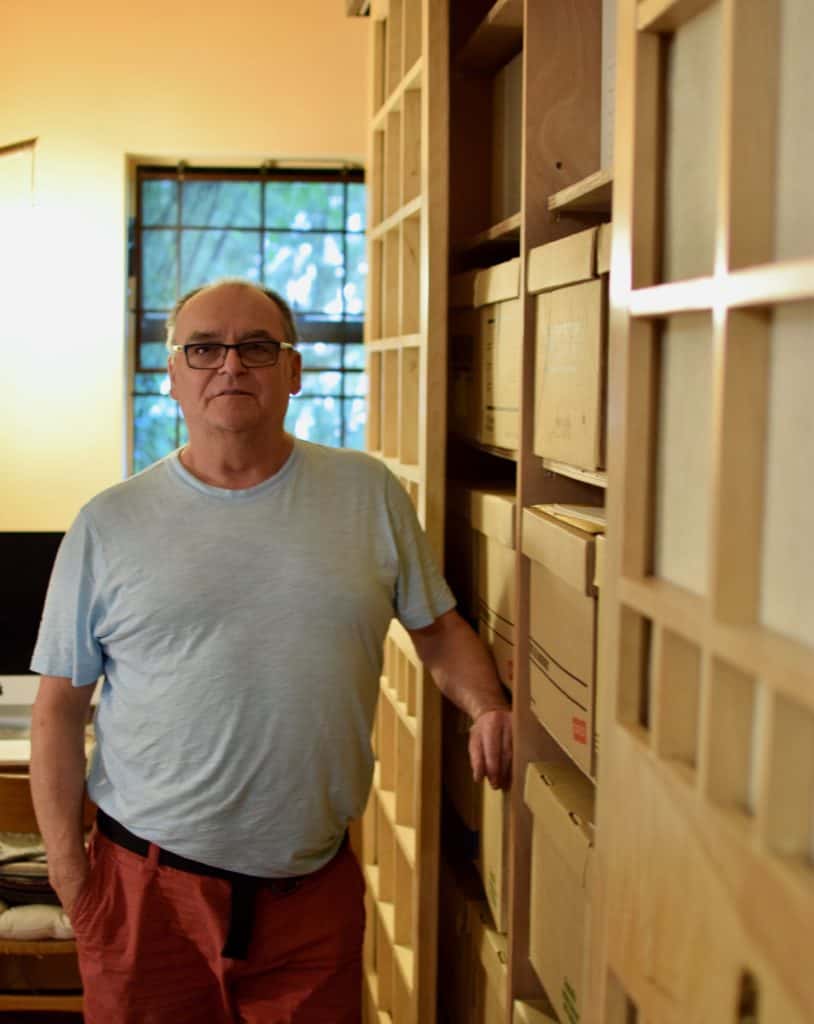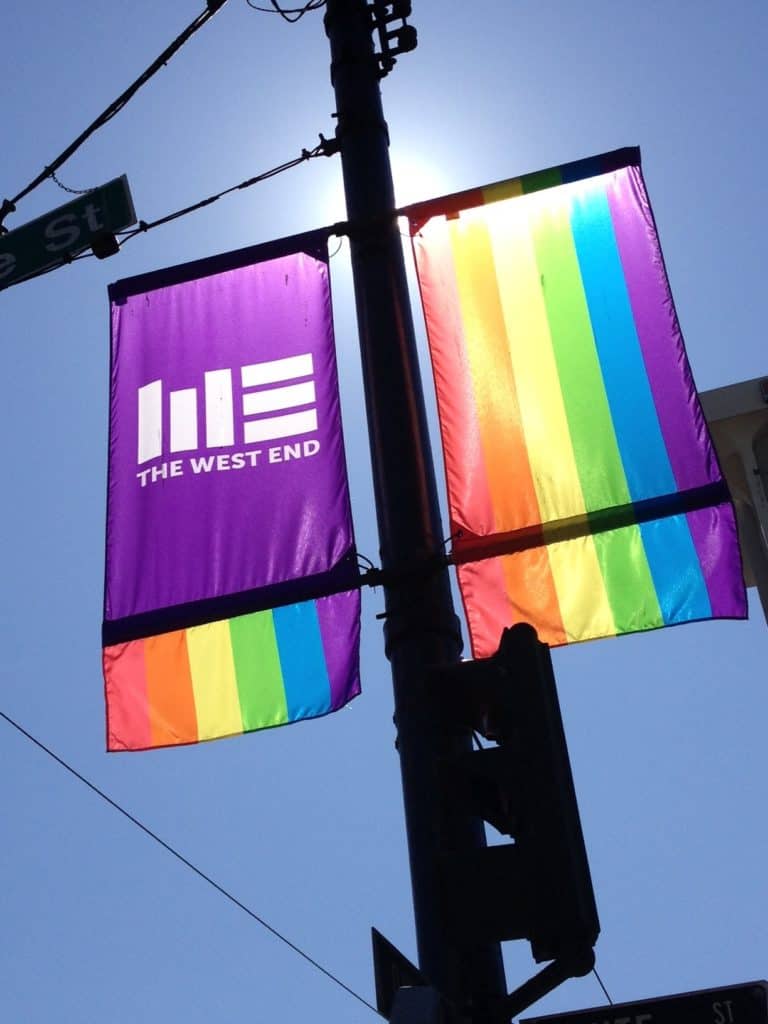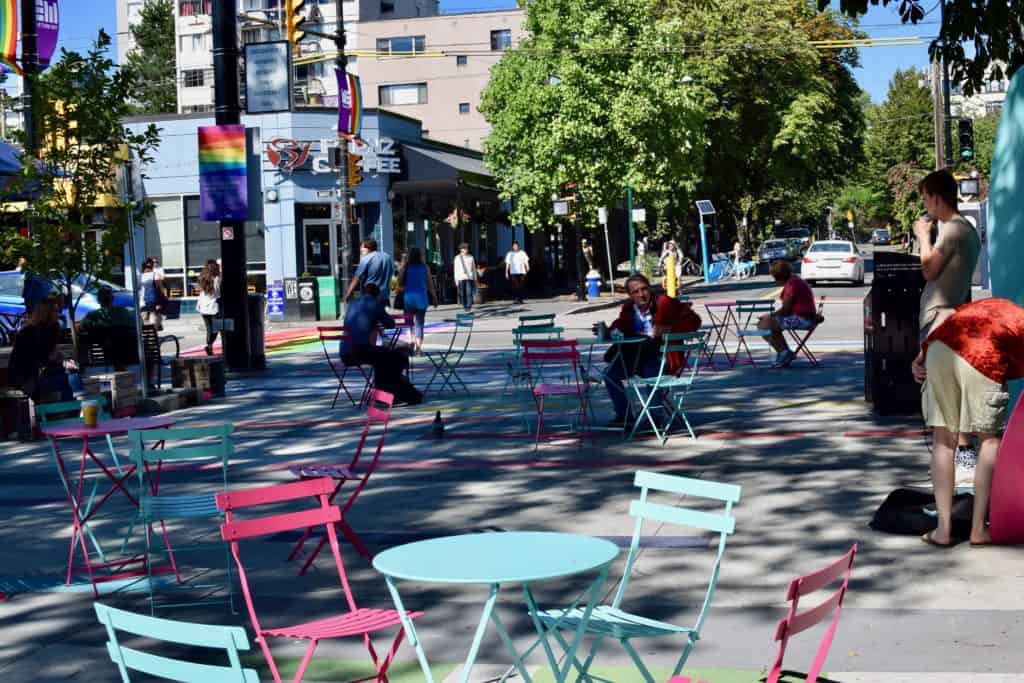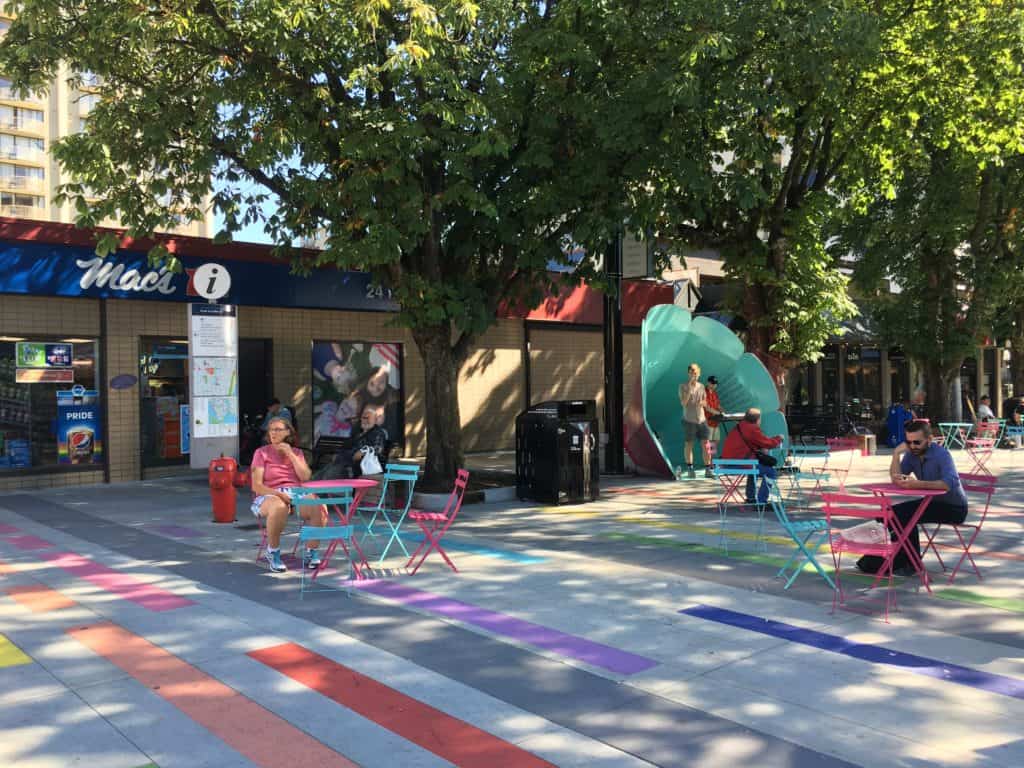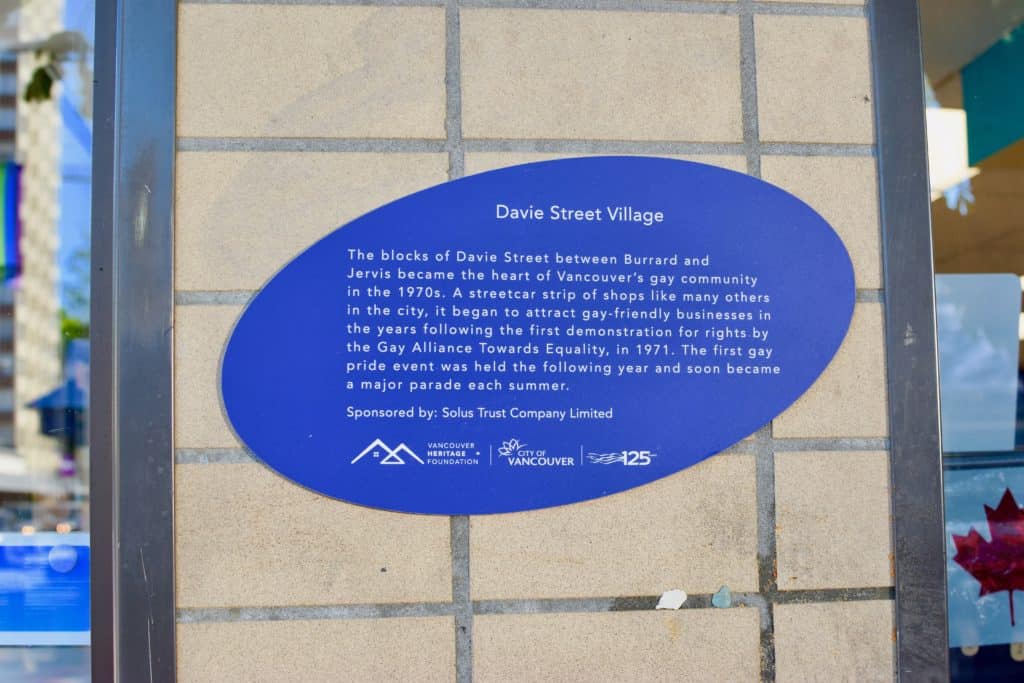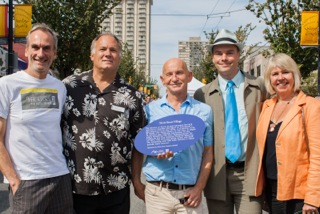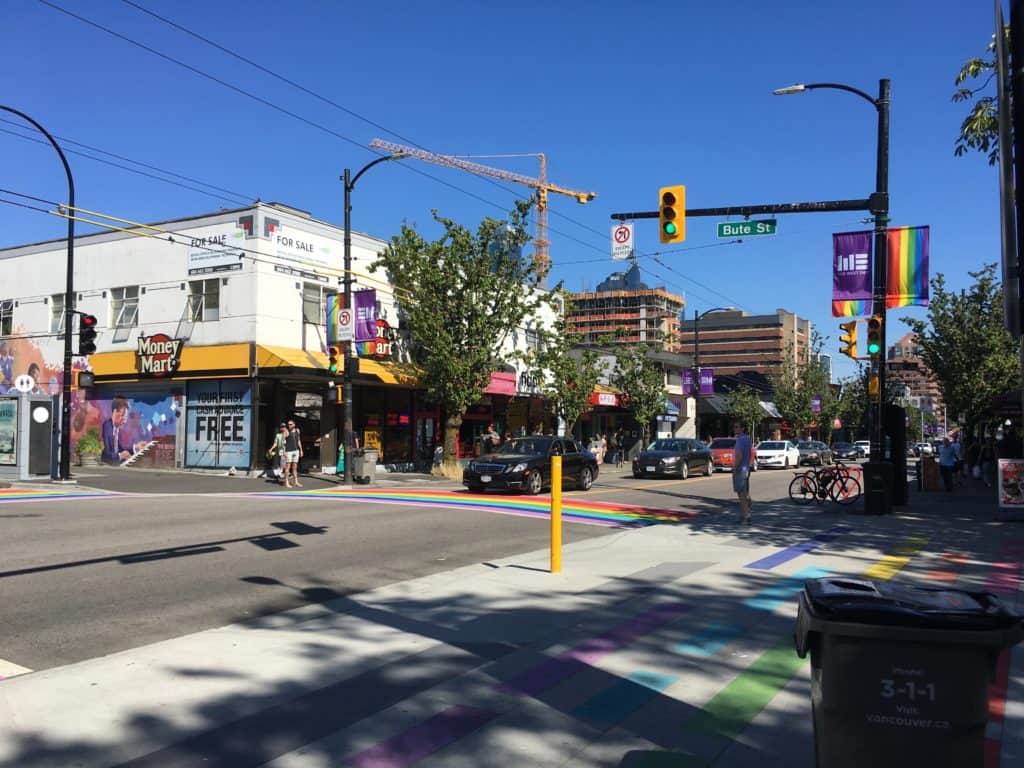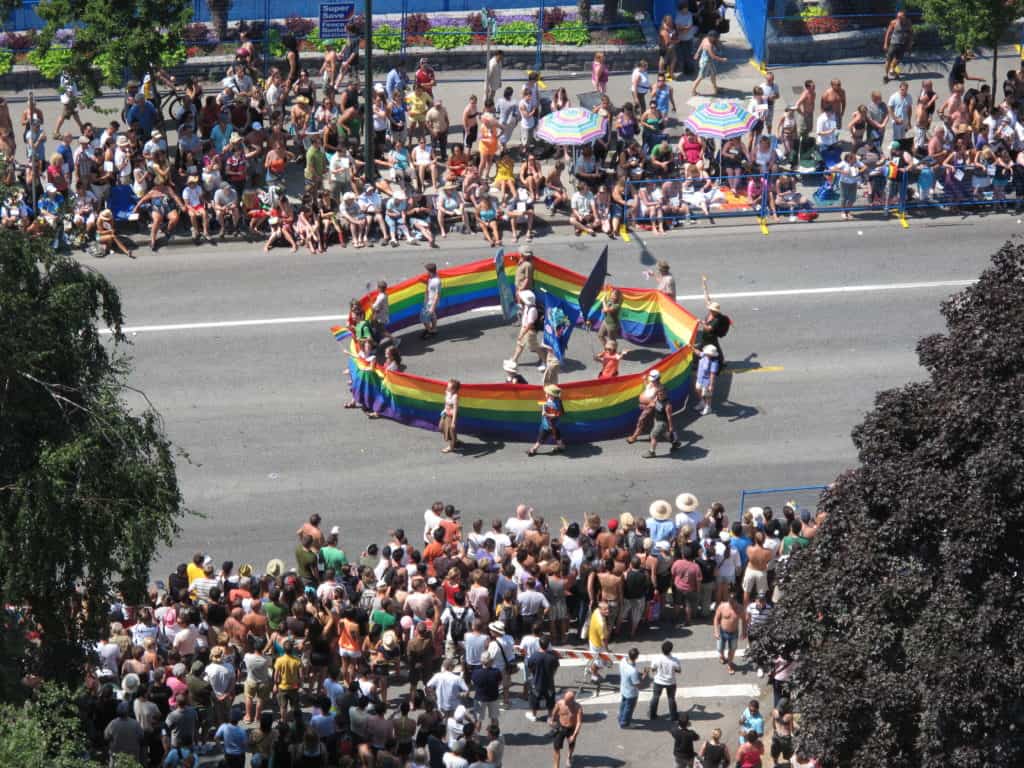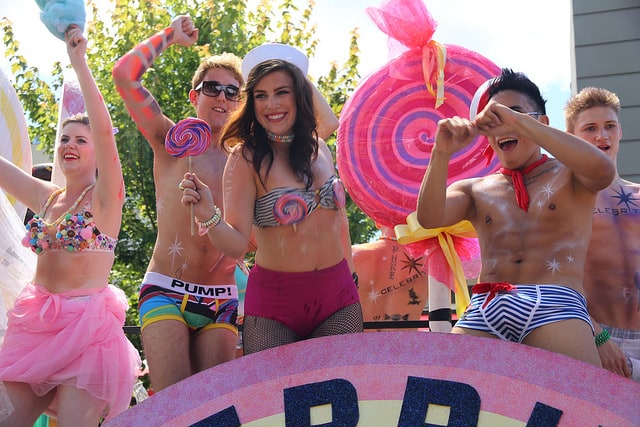The West End Gay Scene in the 1940s
It wasn’t until the 1970s that Davie Street’s gay village became visible, but the history of queer communities concentrating in the West End goes back to at least the 1940s, says Ron Dutton, archivist and founder of the B.C. Gay and Lesbian Archives. As wealthy families began migrating to Shaughnessy and Kitsilano, the old West End mansions they left behind were broken up into smaller suites, or bulldozed to make way for apartment buildings for a new wave of working class people. The new generation of West End dwellers included a high percentage of young gay men who came from across Canada, attracted to the West End’s location, affordability and the anonymity of high-density living.
“It was a toxic time – there were a lot of people beaten up, there were a lot of murders,” says Dutton. “And yet, within that, gay people found safe spaces below the radar – whether it was an illegal boozecan or a house party – places where they could be themselves with one another before it became visible. And that was the life saver for most people of that generation. Much of that happened in the West End because you could have an apartment party and nobody was going to blink an eye or notice that there’s an awful lot of men there and not many women.”
1960s-1970s: Becoming Visible
In 1969, homosexuality was decriminalized and in 1971, the first demonstration by the Gay Alliance Towards Equality took place at the Vancouver courthouse. “It was really in the 1970s, that the proportion of gay people in the West End began to grow very rapidly,” explains Dutton. “The community begins to self-identify with this place as ‘their territory’ – it becomes a genuine community instead of a geographic place they live in.” One of Vancouver’s first pride festivals was held in Nelson Park. “They got together and walked from Nelson Park to Sunset Beach Park – on the sidewalk because they didn’t have a permit to have a parade.”
Several institutions emerged that helped make the Davie Street Village a symbol of gay liberation – the Gay Press, a Gay community centre and Little Sister’s Book and Art Emporium. A vibrant and openly gay nightlife flourished, including the open-all-night Fresgo Inn, the Gandydancer, the Shaggy Horse, Numbers and the Retinal Circus (which became Celebrities). More recent clubs include the Odyssey, the Fountainhead, Oasis, Pumpjack, 1181 and XY. “They’ve changed names, they’ve changed locations, but that strip remains the place where you could come downtown in an evening and be within walking distance of many of the clubs,” says Dutton.
Davie Street village today
Today, Davie Village is no longer the only comfortable space for the city’s LGTBQ2+ community; many have moved on to other parts of the Lower Mainland, leading some observers to predict that the “gaybourhood” will soon be a thing of the past. But the Davie Street Village still stands as the “most visible example of queer culture in B.C.” said Dara Parker, former executive director at Qmmunity, B.C.’s queer resource centre which is located on the Davie strip. “There are fewer gay bars than there once were, but they’re certainly full of people on a Saturday night, so clearly it’s filling some kind of need,” says Dutton. “The need to belong, the need to party and blow off steam and the need to meet that guy.” He adds that there will always be a need for LGTBQ2+ newcomers to learn who they are, where they come from and how to live in the world; and the Davie Street Village continues to provide that community and support.
Jim Deva Plaza
The Places that Matter plaque is located in the heart of Davie Village on the Jim Deva Plaza, next to the rainbow crosswalks at Davie and Bute Street. The plaza is named after Jim Deva, longtime community activist, founder of Little Sister’s Book and Art Emporium, and advocate for Vancouver’s LGTBQ2+ community. In court cases observed around the world, the Little Sister’s bookstore had a major impact on publishing and Canadian censorship laws. The plaza is a community gathering space that hosts a variety of events, including musical performances, dance classes, and workshops.
Sources:
- Ron Dutton. Personal interview. July 5, 2017.
- Ian Holliday. “There goes the Gayborhood? UBC prof says Davie Street changing, not dying.” CTV Vancouver. Aug 4, 2014.
- “Urban Village to World City” by David Ley, Daniel Hiebert and Geraldine Pratt in Wynn and Oke, ed., Vancouver and Its Region, UBC Press, 1992, pp. 240–2.
- Sandra Thomas. “West End: Archivist ensures city’s queer history kept for posterity.” Vancouver Courier. Jan 20, 2014.
- “It Takes A Village,” by Jeff Lee, Sun, July 30, 2011, quoting Ron Dutton, archivist for the BC gay and lesbian communities since 1976.
- West End BIA. “Jim Deva Plaza.”
Nearby Places That Matter



